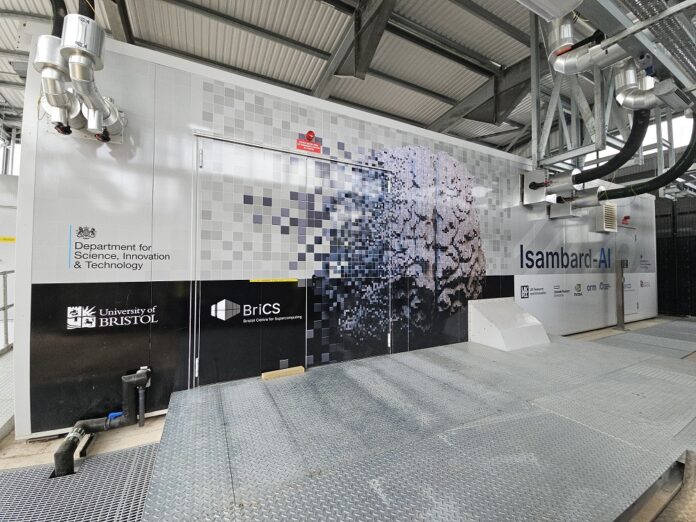National Grid Electricity Distribution (NGED) has energised the UK’s most powerful AI supercomputer, completing a new 5 MW connection to Bristol’s distribution network in just three weeks.
The Isambard-AI system, which has been developed by the University of Bristol, Hewlett Packard Enterprise and NVIDIA, is billed as 100,000 times faster than a typical laptop and now ranks 11th in the global TOP500 list of high-performance computers. Its construction was backed by £225 million of Government funding and will be put to work in a range of tasks – from drug discovery to climate modelling.
It was key to get a robust grid connection for the Isambard-AI system as it draws roughly the same electricity as 2,000 homes. To feed that demand, NGED engineers laid several hundred metres of underground cable from the primary substation at Emersons Green and built a dedicated high-voltage substation on the Bristol & Bath Science Park. The company says it is the first supercomputer it has connected in the South West of England.
Stephen Blackwell, NGED’s Bristol Head of Operations, commented, “Isambard-AI is a nationally important step forward in AI-research infrastructure and is the first supercomputer grid connection we have enabled in the region.
“We have worked at pace to enable energisation, collaborating with the university, the Department for Science, Innovation and Technology and others to make this happen, and in the process helping to boost the country’s AI capabilities.”
Unlocking next-generation research
Isambard-AI is operated by the Bristol Centre for Supercomputing and becomes the flagship system in the UK’s push for ‘sovereign’ AI capacity. It pairs 5,448 NVIDIA Grace Hopper Superchips with HPE’s Cray EX architecture, delivering more than 200 petaFLOPS of peak performance while promising energy efficiency gains over earlier generations of hardware.
Professor Simon McIntosh-Smith, Director of the Bristol Centre for Supercomputing and co-founder of Isambard-AI, noted, “Securing a 5MW grid connection was a critical step for the project. It enables us to launch Isambard-AI and open up its full potential of next-generation supercomputing, whilst paving the way for innovation, skills development, and economic growth across the region and beyond.
“Isambard-AI places Bristol at the centre of the AI revolution, spearheading AI innovation and scientific discovery in important areas such as drug discovery and climate research.”
What happens next?
The system is now fully operational and available to academic, governmental and industrial users through the UK Research and Innovation (UKRI) framework. NGED says the new high-voltage infrastructure has capacity for future expansion should the University of Bristol scale the cluster further.



